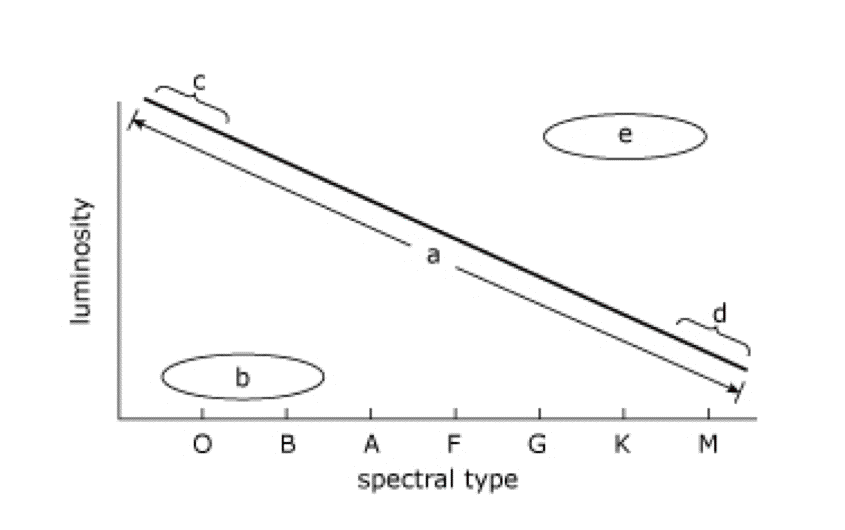H. E. Smith Spring 2007

| Physics 5 - Quiz #4 |

Quiz 4 Monday 4/30/07
Physics 5 – Spring Quarter 2007
Prof. Smith
Answer Key
To answer the following questions, refer to the labels (a)
through (e) on the H--R diagram sketch. [Note that choice (a) refers to the
entire main sequence, while (c) and (d) refer to only small parts of the main
sequence. If choices (c) or (d) offer better answers to the question than (a),
use the best choice.]

1. Which group represents stars that are cool and dim?
A B C D E
2. Which group represents stars of the largest radii? A B C D E
3. Which group represents the most common type of stars?
A B C D E
4. Which group represents stars fusing hydrogen in their cores?
A
B C D E
5. Which group represents stars that are extremely bright
and emit most
A B C
D E
of
their radiation as ultraviolet light?
6. The overall
result of the proton-proton chain is:
A. 6 H becomes 2 He + energy.
B. 4 H becomes 1 He + energy.
C. p + p becomes 2 H + energy.
D. 2 H + p
becomes 1 He + energy.
7. What are neutrinos? What was the solar neutrino problem,
and why do we think it has now been solved?
Neutrinos are subatomic particles produced in nuclear
reactions. They move at nearly the speed of light and almost never interact
with matter. Detectors on Earth found only about 1/3 of the neutrinos predicted
by models of nuclear fusion in the Sun. This disagreement between theory and
data was called "the solar neutrino problem." Today, we think we have
solved the problem and that the electron neutrinos we were measuring had
changed into other kinds of neutrinos. Recent experiments support this idea by
showing that neutrinos can change their type. Other experiments are showing
that the total number of neutrinos of all types is about what the models for
fusion in the Sun predict, indicating that the problem is solved.